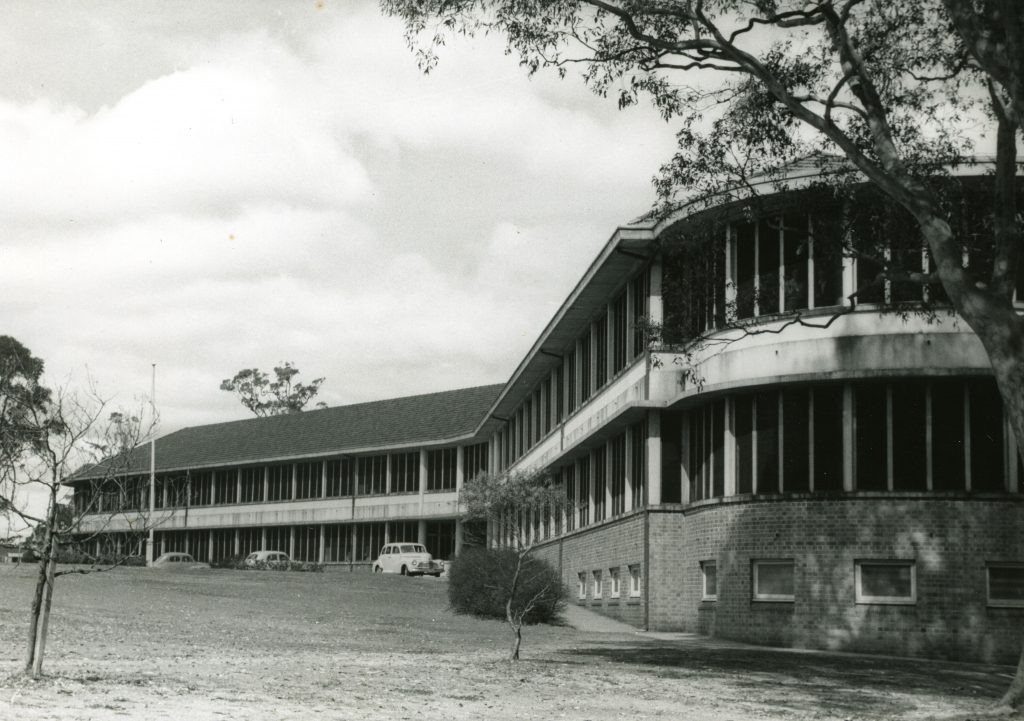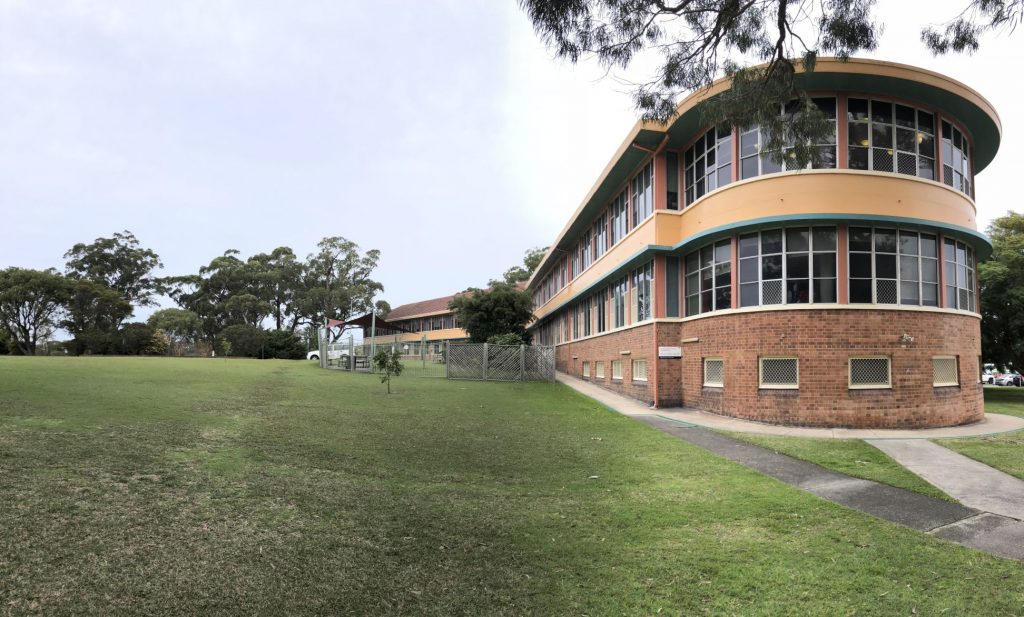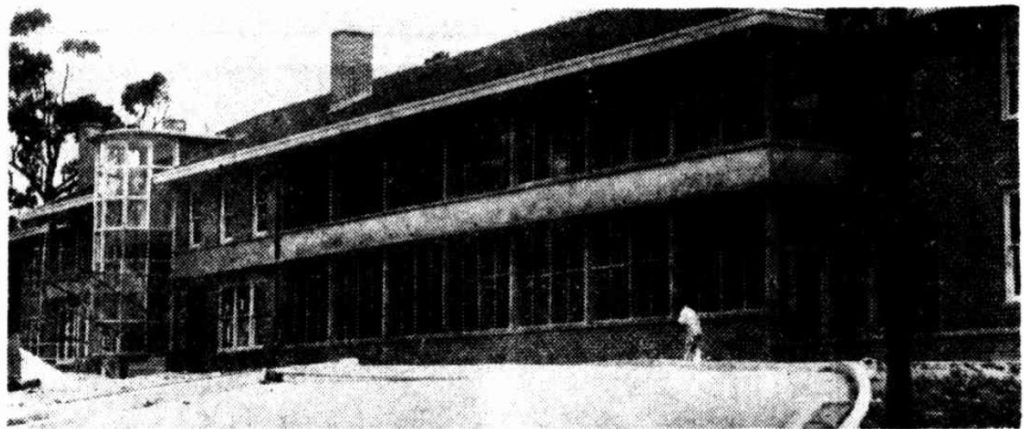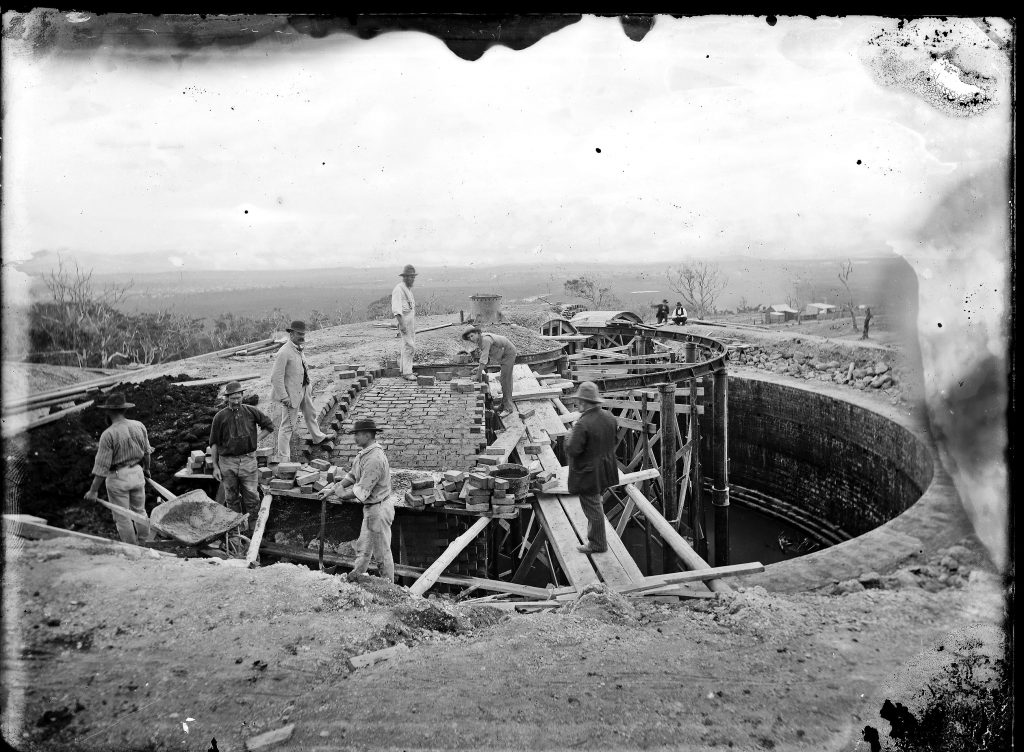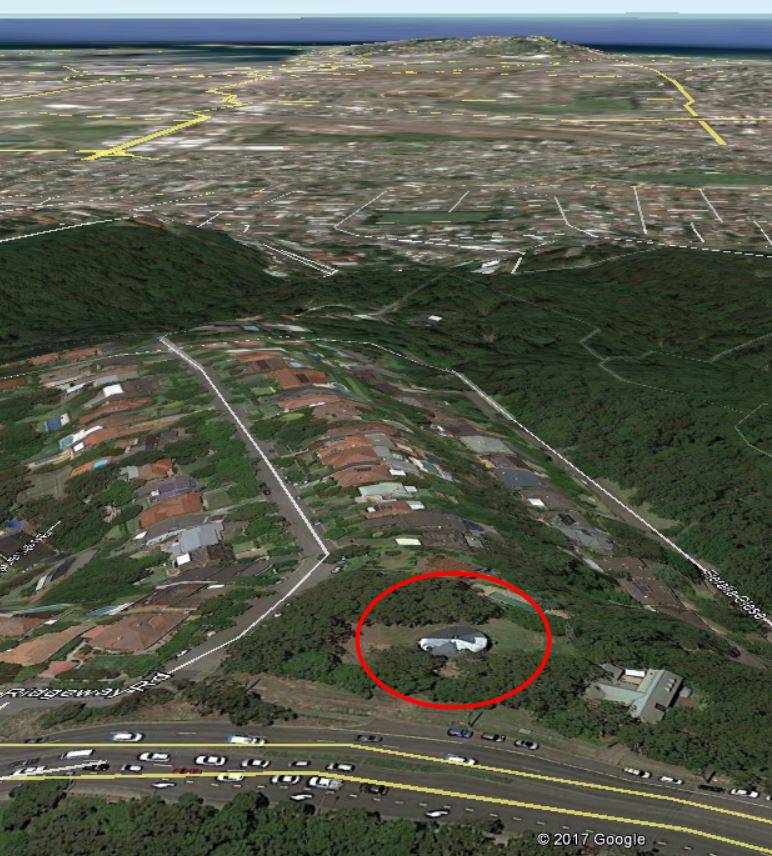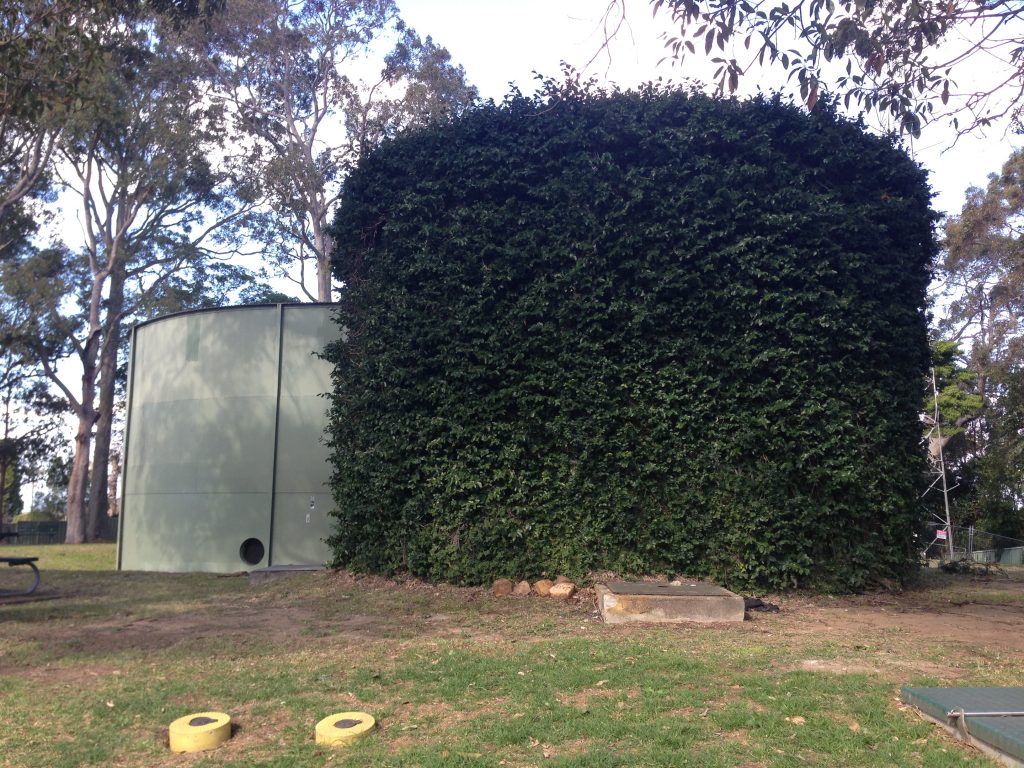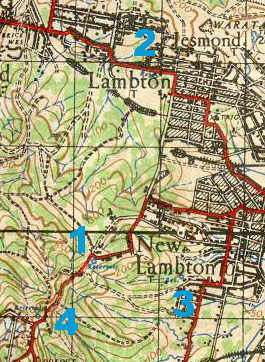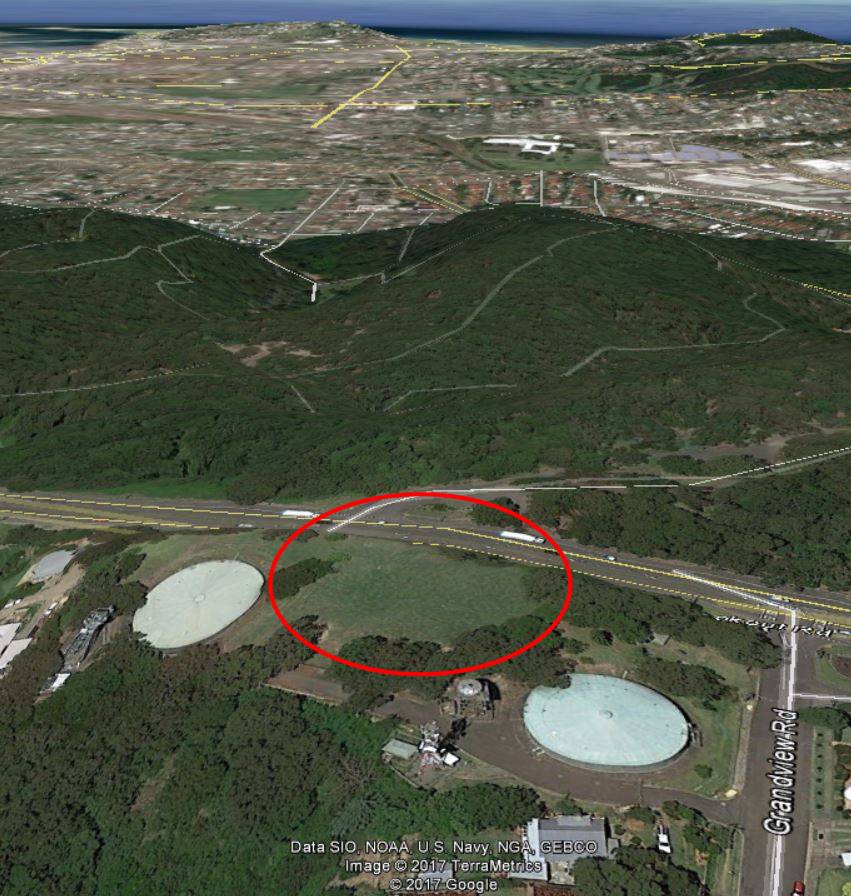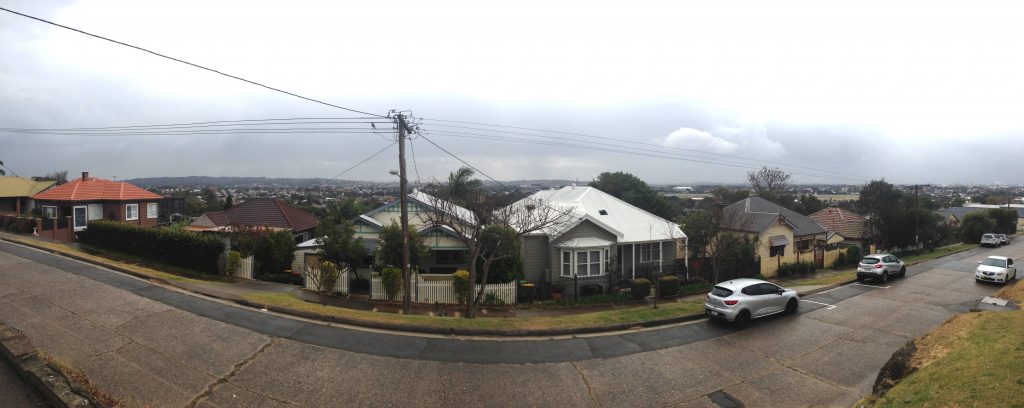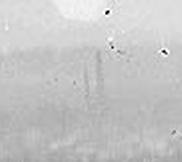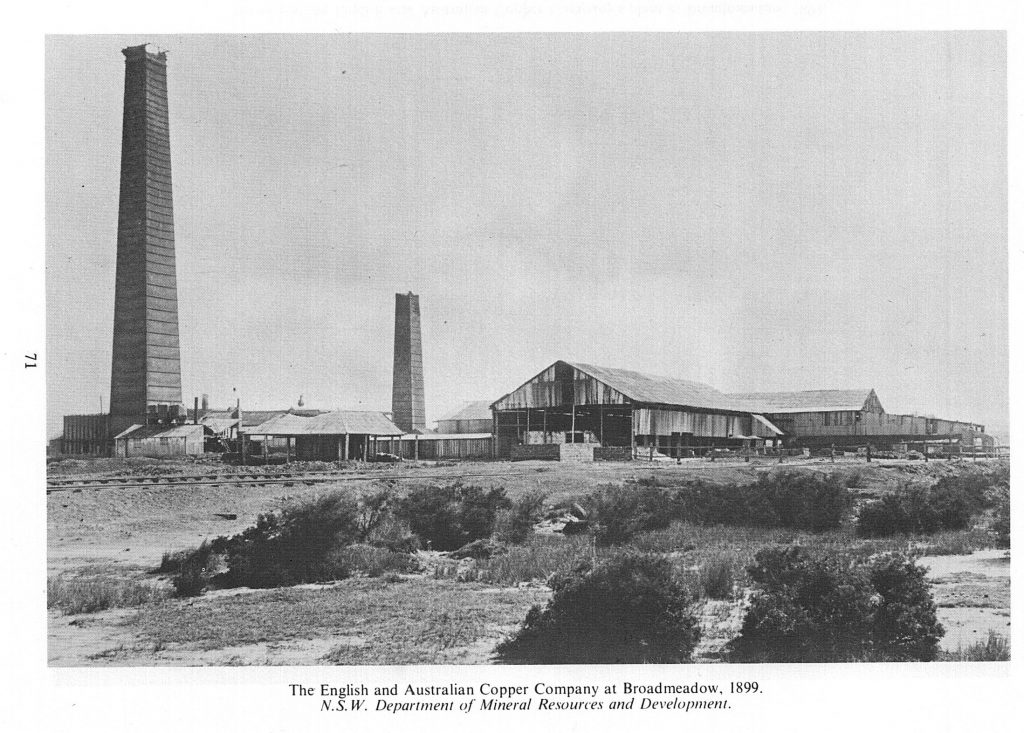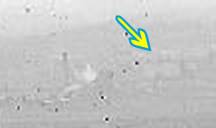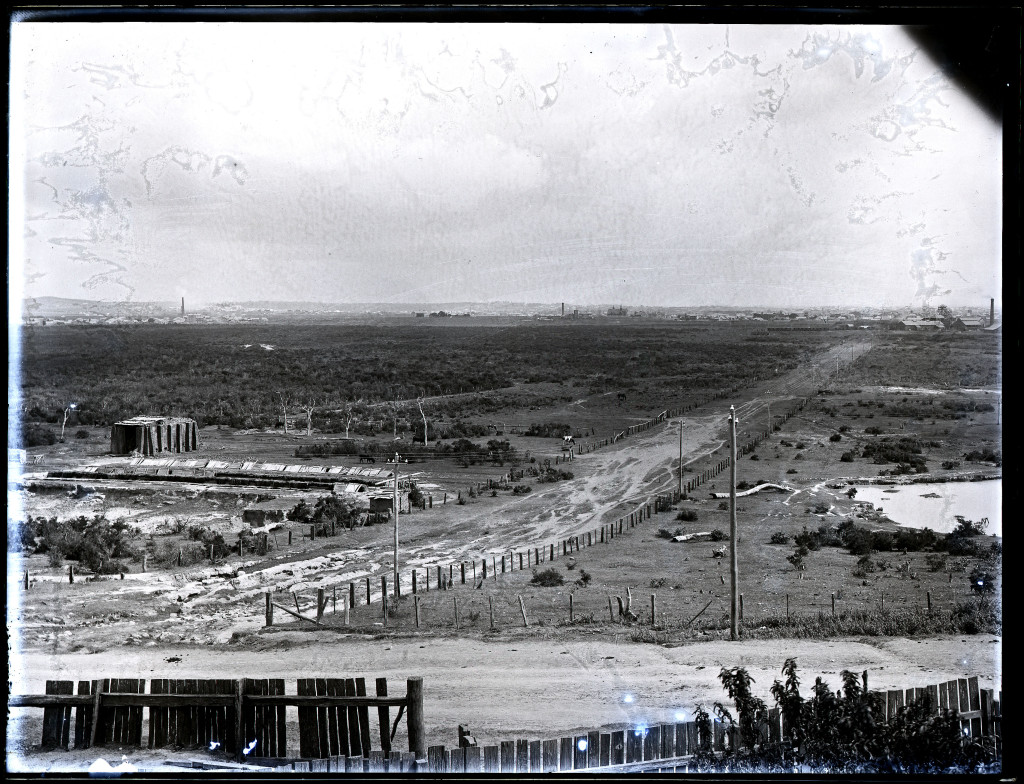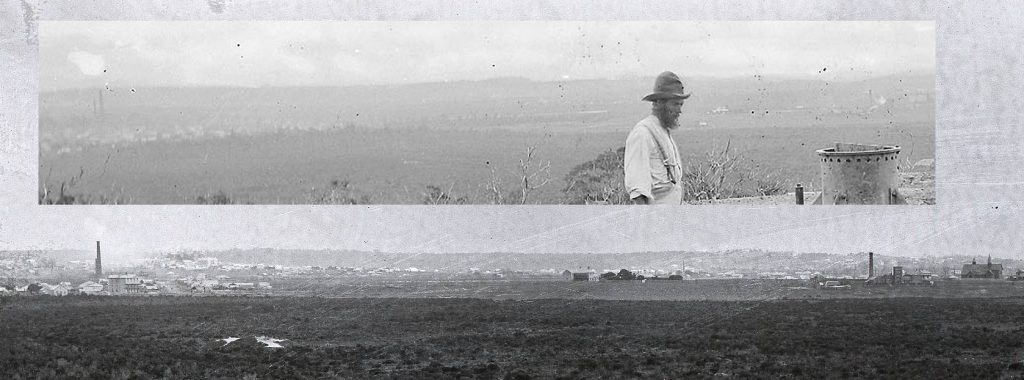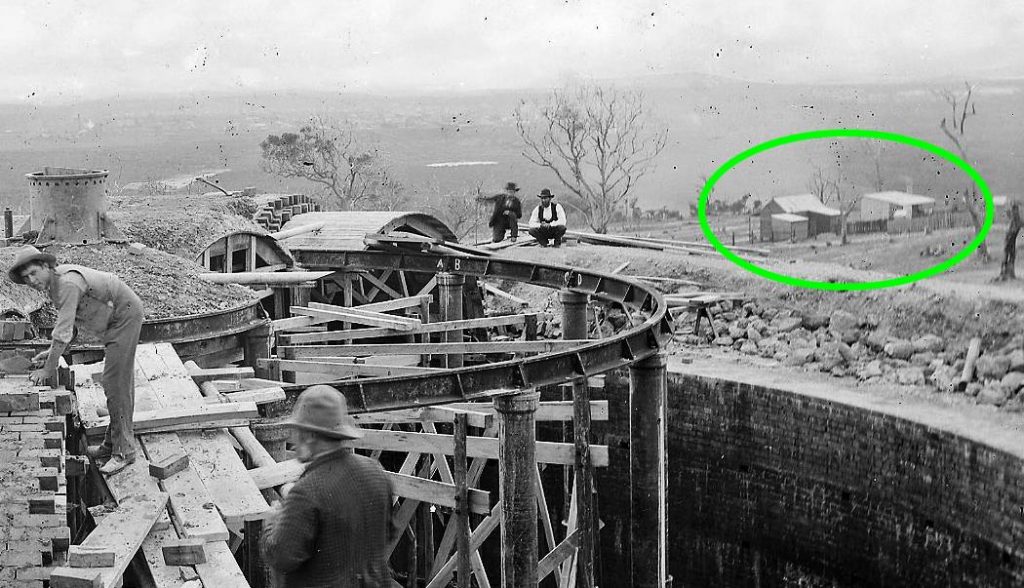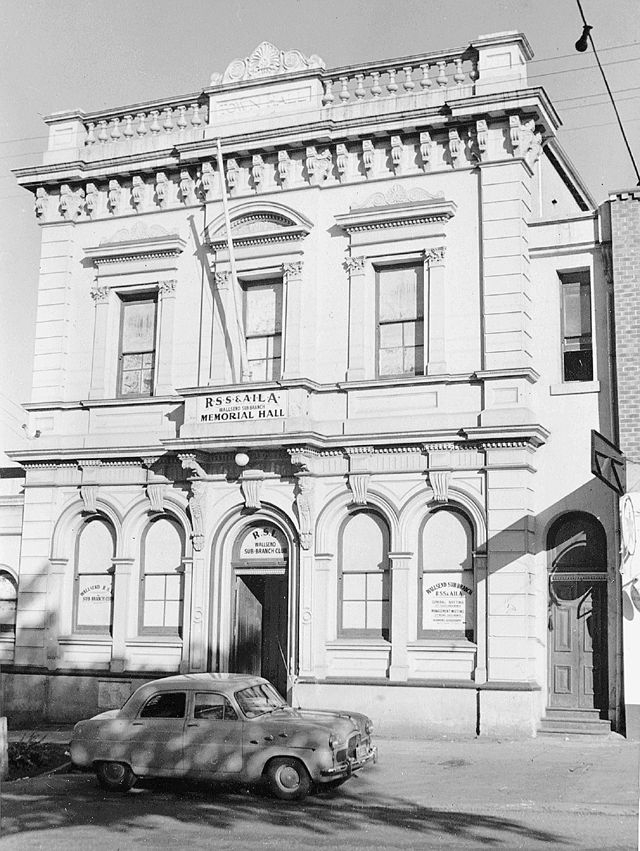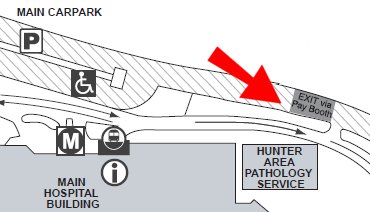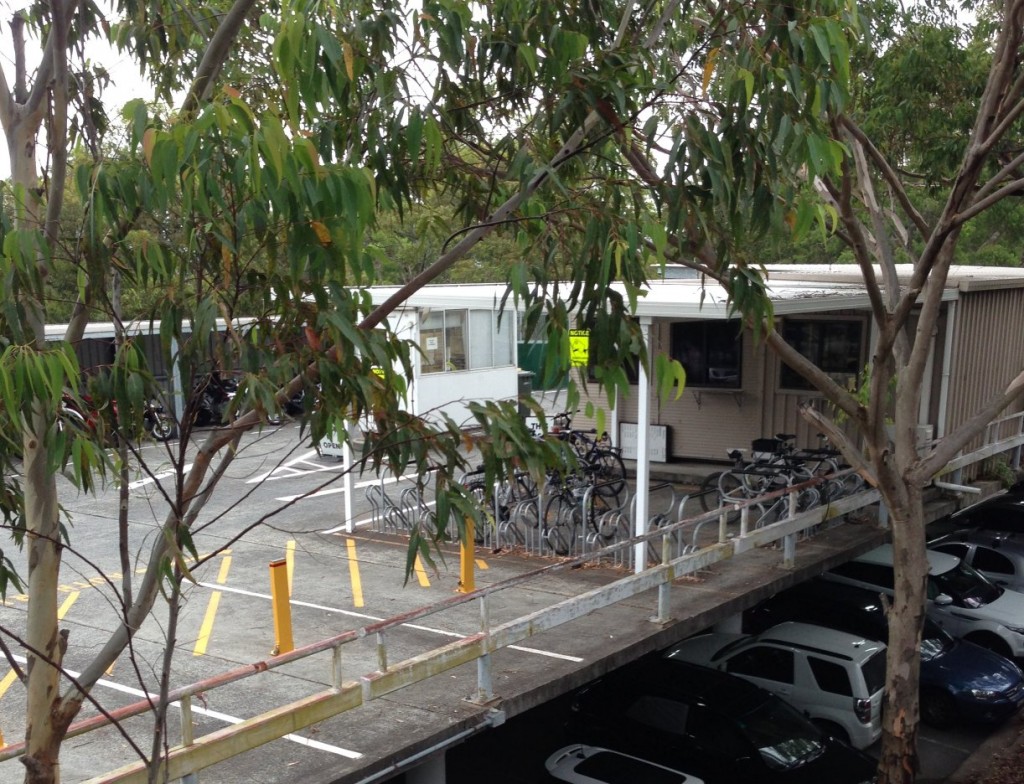Inauguration of Lambton Colliery furnace, 3 June 1871
When Lambton Colliery opened in 1863, the manager Thomas Croudace set about to make it the most modern, productive and safe mine in the colony. Having supervised the construction of the largest ventilating furnace in the country, he arranged to celebrate its opening in an unusual manner. The following is an edited extract of The Newcastle Chronicle’s report of the opening, 150 years ago this month.
Saturday was a red-letter day in the history of the Lambton Colliery. A tolerably large party of our citizens, in receipt of invitations from Mr. Thomas Croudace, left for the colliery, to celebrate the opening of the new furnace lately erected. The engine-room was visited, and then commenced the subterranean journey.
Proceeding a distance of more than three quarters of a mile from the working pit, and very nearly at a depth of 400 feet – the new furnace!
Its total length is 45 feet, thickness of wall, 4 feet, the main arch 12 feet high. The fire-bars are 5 feet long, and there are 160 of them resting upon strong bearing bars which are supported by nine cast iron pillars. The cost of castings alone for this furnace was £200. About 1000 bricks have been used in its erection, and the total expenditure is rather over £1000.
It is estimated when at full work to consume from 10 to 12 tons coal daily, and draw nine million cubic feet of air per hour. There it stood, brilliant in its coating of red and well-blacked doors — a monument of skill and industry. Its apertures exposing the pleasures yet to come, an ascent was made on to the floor of the furnace, where on the firebars was found a table bountifully supplied with good cheer, to celebrate the opening of the brick arched chamber so soon to be in full operation, ventilating the mine.
Delay to the hungry travellers was out of the question, seats were taken, the busy clatter of knives and forks commenced, subdued only by the strains of the [Lambton Brass] Band, which played at intervals. The cloth having been cleared, [toasts were drunk and speeches made.]
Mr. Croudace said “However simple it might appear, great difficulties beset its construction, but he was happy to be able to say that no accident had occurred during the whole time the men had been working at it. They had done the best that could be done to lessen the evils the miners were subjected to in their underground labour.”
By the road it had come the party returned to the surface, after passing a very pleasant and instructive afternoon in the bowels of the earth.
The Newcastle Chronicle, 8 June 1871.

The article above was first published in the June 2021 edition of The Local.
Additional Information
In regard to this particular furnace of Lambton colliery, I haven’t come across any photographs of either the shaft on the surface, or the furnace underground. Probably on the surface, the outlet of the shaft looked something like the Mosquito Pit, which was another ventilating shaft of the Lambton colliery, further to the south.
Underground, the furnace is described as having a semi-circular main arch “11 ft 9 in. in the clear”. The Museum of Wales has a photograph of a collapsed ventilating furnace, which gives an indication of what the Lambton furnace may have looked like.
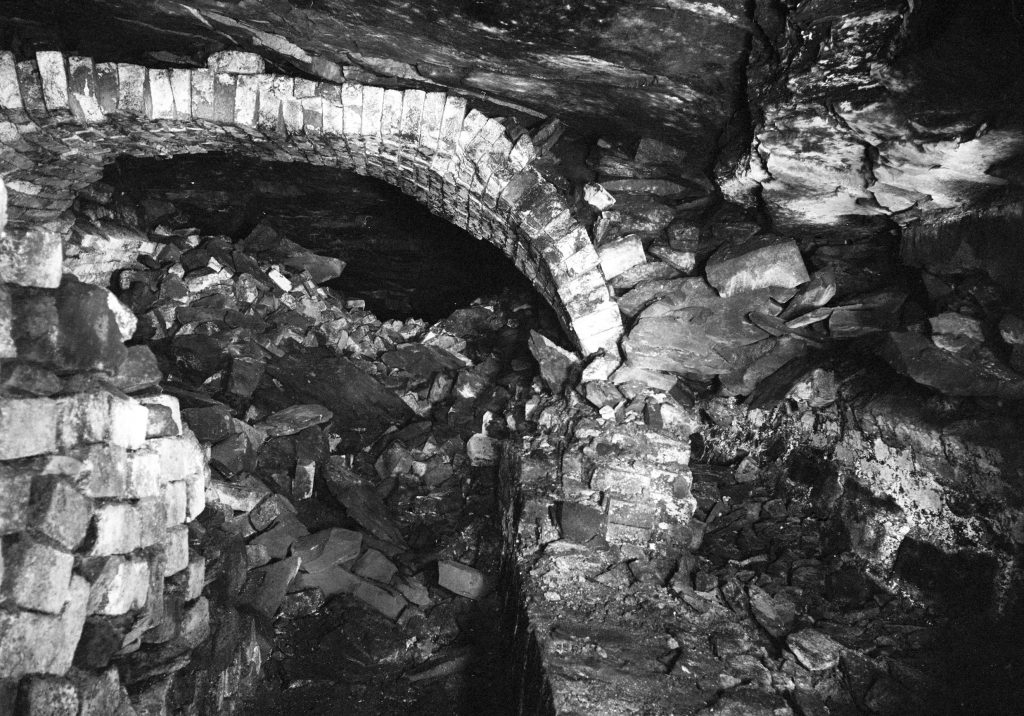

Thomas Croudace’s 1871 ventilating furnace appears to have operated until about 1925-26. A 1925 article on the decommissioning of a winding engine noted that in the Lambton Colliery …
The air current has always been regarded as good, all foul air being drawn from the pit by means of the upcast furnace shaft, located near the manager’s residence on the Charlestown-road.
Newcastle Morning Herald and Miners’ ADvocate, 15 June 1925.
An article on the closure of the mine in 1936 speaks of the installation of fan ventilation in 1926, so presumably the ventilating furnace was decommissioned around this time.
The installation of a ventilating fan in 1926 allowed miners to penetrate to places which could not have been reached under the old system of ventilation by furnaces, owing to the presence of black damp.
Newcastle Morning Herald and Miners’ ADvocate, 20 June 1936.
A feature survey map from Scottish Australian Mining Company held by the Local Studies section of Newcastle Library suggests that the furnace shaft was gone by 1925, as the shaft is not marked, whereas numerous other shafts and colliery infrastructure are marked.
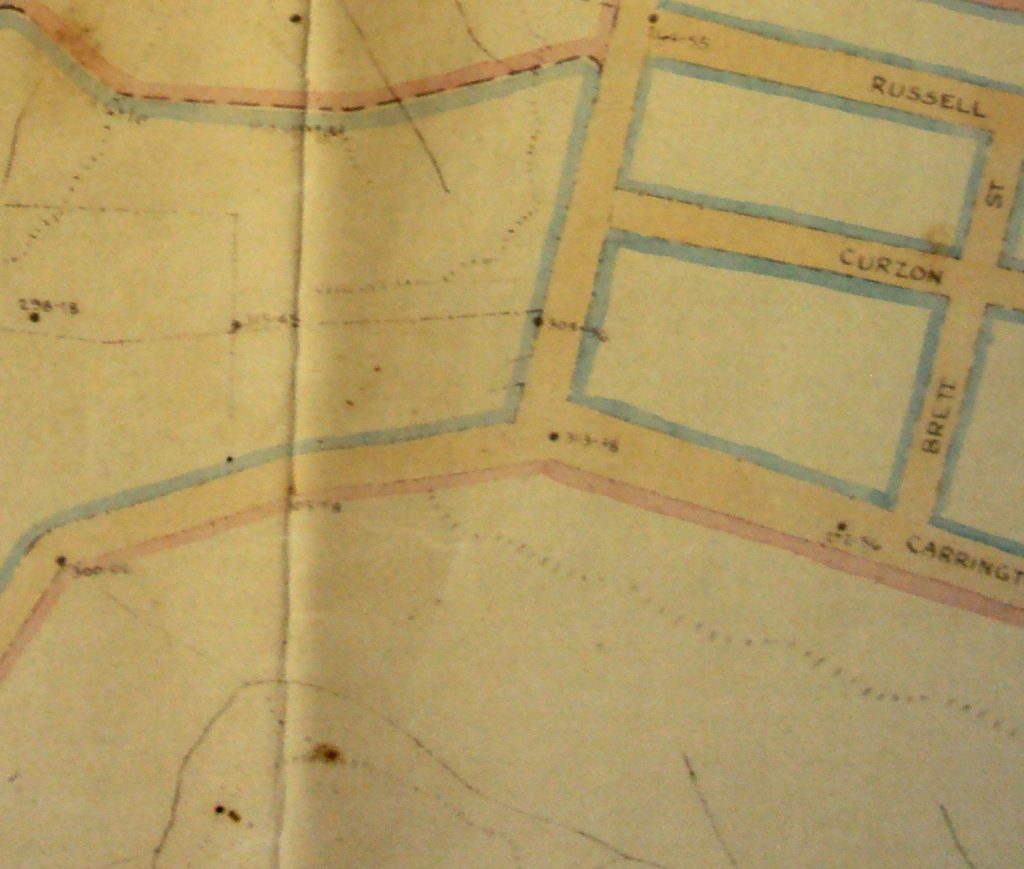
Other maps
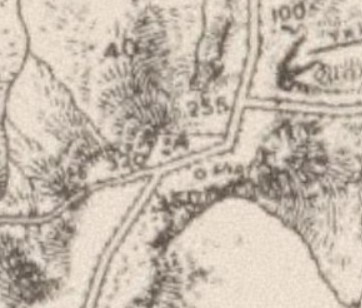

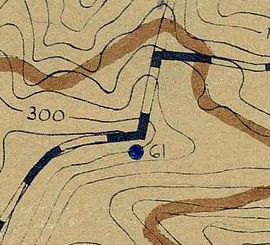
Full article from 1871
The following is the full text of the Newcastle Chronicle’s report of 8 June 1871, with the text that I condensed into my article, shown in red. For simplicity in my article, I rounded some of the furnace dimensions to the nearest foot.
LAMBTON COLLIERY. INAUGURATION OF THE NEW FURNACE.
Saturday was a red letter day in the history of the Lambton Colliery. Leaving this city as shortly before one o’clock, a tolerably large party of our citizens, in receipt of invitations from Mr. Thomas Croudace, the manager, left the railway station by special, kindly laid on for the purpose, in rear of the return trucks, for the colliery, to celebrate the opening of the new furnace lately erected. On arriving at the works they were met by Mr. Jackson, and with him escorted to the residence of Mr. Thomas Croudace. The ascent of a rather steep hill was fully repaid by the really charming view afforded on reaching its summit. Facing the entrance gates, through an opening in the primaeval forest, appeared as pretty a panoramic view as could be desired. In the centre Nobby’s and the port, to the right the city of Newcastle, to the left the North Shore and the coast line, trending northerly to Port Stephens, in the extreme distance the blue ocean. The weather was beautifully fine, and though a slight haze hung o’er the distance, yet this only added to the beauty of the scene. The sun shone brightly, the air was mild and balmy, and nature, as if willing to assist in perfecting the day’s pleasure, had assumed her gayest holiday attire. At the entrance, Mr. Croudace met and welcomed his guests, and conducted them to his pretty villa, by a broad carriage drive in course of formation, and then over a lawn — fresh and green with artificial grasses and clover — suggesting croquet and bowls, and other pleasant pastimes. Here fresh scenery awaited the visitors — to the northward and westward, in the back ground, lay purple hills, almost rising to the dignity of mountains, and low down, in mid distance, sheets of water, without which no picture of this kind can be perfect, greeted the view. The house, standing on the crown of the eminence, commanded each vista, and rightly was it remarked that the host of the day’s lot had fallen in pleasant places. Lunch was shortly announced, and whilst the inner man was being stayed against the afternoon’s underground fatigues, the Lambton brass band, in an exceedingly neat and becoming uniform made its appearance, and performed in excellent style some of their choice pieces. Lunch over, the party, headed by the band, and passing close on their right the head of the new furnace chimney, once more descended the hill, and arriving at the foot, were shown over the works, which were fully explained to them. The engine-room was also visited, and then commenced the subterranean journey. Provided with numerous lanterns, and headed by the manager, the tunnel was entered, and after proceeding a short distance, over a double line of T rails of 40 lbs. to the yard, fishtailed
and thoroughly secured— the gradients varying from 1 in 24 to 1 in 40, and the gauge 2 feet — the explorers turned to the left, and with a fresh breeze blowing right astern, over a single line and between walls of coal, pushed on. As the journey was continued, on every hand one saw the evidence of what science and skill, having been brought to bear, had effected in simplifying the miners’ labour and enhancing his comfort. The gallery was in most parts sufficiently high for a six-footer to proceed erect, though at times stooping had to be resorted to, and the atmosphere for the greater part of the distance was cool and comfortable enough. The first divergence made was to the left, and here was found the old furnace, in full blast, drawing to it cold currents of air from the outer world, and with the assistance of cunningly devised traps and passages sending them on their mission of health and safety throughout the underground works. Once more on the direct route, a voice, proceeding from under a small tin lamp fastened in front of a cap borne by an invisible wearer, said something, understood by the initiated only. Look out! was the cry. The 2¼ iron wire rope, the party had been following from the drum in the engine-room, down to where they were now arrested in their descent, was running up the drive and over the rollers pretty rapidly, presently a low rumbling was heard, which gradually increased in volume until, some three dozen coal laden skips made their appearance. On a signal given the miniature train stopped, and then more explanation ensued. First the use of the devil and then its mechanism, beautiful in its simplicity came under notice, and it was shown how in a minute the hauling wire could, by its means, be attached to or detached from the leading skip, afterwards (literally,) the cow was inspected and its power of stopping the train from rushing back into the depths of the pit was exemplified, and the signal being again given the coal laden skips and their inspectors each went their different ways. Presently a halt was called. Here Mr. Croudace pointed out where the miners had come upon a Whyn Dyke of igneous rock and had lost the seam, and how they had only come upon it again by ‘following my leader.’ The leader in this case being a little narrow indication of coal, which however, sufficed once more to bring them into the seam. Again a halt, and this time, a number of empty skips following their principle of gravitation, rushed down the incline as if in a hurry for more coal. The crown of the gallery now lowers considerably, the air is getting closer, occasionally large spaces are seen overhead, where there has been a fall, and the presence of water commences to make itself known. A turn to the right and there is a gigantic cellar, the roof supported by stout timbers, and the space filled on every side with millions of tons of coal. The air was still closer here and more oppressive, than even in a gallery itself, and there, on returning, its effect begins to be felt. Yet another few yards, a door thrown open, a turn to the left, another short stooping match and there, after passing the Lambton band, sitting on a long table on the left, right in front, stood the new-fashioned banquet room, 64 chains, or rather more than three quarters of a mile from the working pit, and very nearly at a depth of 400 feet — though not directly underneath the entrance gates of the manager’s grounds. First, however, the pumping apparatus had to be inspected; it was close handy, and was found to be a compound steam and hydraulic engine, constructed by Garratt and Marshall. This placed at the bottom of the shaft, which is the lowest present level forces the water through pipes 4¼ in. in diameter, a. distance of three-quarters of a mile, with a vertical column of about 120 feet, at the rate of 80,000 gallons in 10 hours. It is in fact a direct-acting force pump, attached to the piston rod of an inverted cylinder, thus forming the compound power. The new furnace may be thus described— Its total length is 45 feet, thickness of walls, 3 feet, and casing, 9 in., making 3 ft 9 in. The foundation is laid with a mixture of Sydney and Waratah stones, 4ft. 3 in. broad, 4ft. 3 in. long, 1 ft. 3 in. in thickness, all set in cement, and carried down to hard stone, 9 ft. below coal. The whole of the work to bottom of the bars is set in cement, after that the outside walls are set in mortar, and the inside walls in fire clay. The main arch is 11 ft. 9 in. in the clear, and is a semicircle, cased 3 ft. up from fire-bars, with 9 in. brickwork. There are three fire-holes at each side with double archways over each, and two at the end, making eight in all. The fire-bars are 5 ft. long, and there are 160 of them; they rest upon strong bearing bars running the whole length of the furnace grate, viz., 20 feet, which are again supported by nine cast iron pillars set upon dwarf walls, built in cement from hard stone. The cost of castings alone for this furnace was £200; about 1000 bricks have been used in its erection, and the total expenditure is rather over £1000. It is larger than the great ventilating furnace at Eppleton pit, Hetton, county of Durham, England, that being 26 ft. long, by 6 ft. wide, having 156 square feet of fire surface or grates; whereas the Lambton furnace is 20 ft. long, by 10 ft. wide, and has 200 ft. of fire surface. It is estimated when at full work to consume from 10 to 12 tons coal daily, and at that rate consume nine million cubic feet of air per hour. And there it stood, brilliant in its coating of red and well-blacked doors — a monument of skill and industry, its apertures exposing the pleasures yet to come. The work of inspection being now concluded, an ascent was made on to the floor of the furnace, where, on the firebars was found a table bountifully supplied with good cheer, where withal to celebrate the opening of the brick arched chamber so soon to be in full operation, ventilating the mine, but now used as a banquetting hall. Of course, all light was artificial, and to one unused to subterranean entertainments, there was added to the charm of pleasant society that of novelty also. Just beyond the further end of the table the dark, hollow recesses of the well and the shaft showed themselves. A free current of air passing through the furnace kept it fairly cool, and then found its way up to the surface by the huge chimney, meeting on its way with sundry small supplies of water which, falling, dropped musically into the dismal receptacle below. Delay to the hungry travellers was out of the question — seats were taken, Mr. Croudace in the chair, and the Rev. J. S. Wood, who officiated as vice, having asked a blessing, the busy clatter of knives and forks commenced, subdued only by the strains of the band, which played at intervals. The only drawback to the enjoyment was the unavoidable absence of several gentlemen who had been invited. The cloth having been cleared, The Chairman gave ‘ The Queen.’ This toast having been duly honored, ‘The Governor, the Earl of Belmore,’ followed. In proposing this toast, the chairman said it really did seem very strange that neither the late nor the present governor, although they could find plenty of time to attend horticultural and agricultural societies, had ever visited any of the collieries. He could assure His Excellency that it would not in any way be derogatory to his position to do so, and were he ever to visit one he would find that he could be right properly entertained. The chairman then proposed ‘The Army, Navy, and Volunteers,’ pointing out at the same time how necessary they were to the safety of the community, both externally and internally. He thought the services well deserving of the toast.
Captain Allan returned thanks on behalf of the three branches. Mr. Sweetland proposed ‘ The Shipping and Commercial interests of Newcastle in a few brief and appropriate remarks. Mr. R. B. Wallace, as one who had made the shipping and coal interests his own for the last ten years, responded. He had closely watched the progress of those interests, and could testify to the rapid strides they had made in that period. He believed they had increased in importance more during the last eight years, than they had during the whole thirty preceeding. He remembered, in 1860, when there was no Queen’s wharf, and only one or two collieries. Coal was then 14s. 6d. a ton, and he regretted that he was not at the present time paying the same price for it. They could then not only build furnaces but assist in increasing the profits of all concerned, directly or indirectly, in the trade. The pits, in 1870, produced from fourteen to fifteen thousand tons weekly ; ten years ago they did not turn out 1000 tons in the same time. They had, during the last few hours, seen where there had been an immense amount of capital expended in that very mine, but he much feared 8s. a ton would not pay the interest on the money laid out. He thought the colliery proprietors had the remedy in their own hands, and it was their own fault if they did not seek it. For himself the coal interests, as he had said, had been his own for the last ten years, he hoped they would be for the next twenty years, and that they would prove even still more satisfactory than they had done.
The Rev. J. S. Wood proposed ‘The coal trade of New South Wales.’ The rev. gentleman looked upon the coal trade as the life blood of the colony. In the old country he had heard of the pastoral interests, the goldfields interests, but what about the coal-field interests, in which thousands within a few miles circuit of Newcastle were interested. He had, when he accepted the invitation, thought he might have to speak, but had not anticipated having so important a toast entrusted to him, especially as there was not one present who was not more or less deeply interested in the success of the coal trade of New South Wales. Not only was Lambton, but the intellect and ability of the other collieries was also represented at that table. There was a considerable amount of shipping engaged in that trade, and within a circuit of three miles, were from eight to ten thousand souls whose daily bread, whose very existence was derived from the coal trade. He thought they were engaged in something more than the mere formal drinking of that toast, when they considered that there were so many whom God had placed on the earth interested in its success. There had evidently been a large amount of capital sunk in the coal pits. He thought he might take the one he was in as a fair sample of all, and that one showed the great care and anxiety which had been taken to secure the welfare of all concerned in their working. There had been evidently great efforts made, to secure their working with safety, and for despatch in forwarding the coal to its destination. Anyone who viewed the matter with an intelligent eye must be convinced that there was a great future opening in connection with the coal trade of New South Wales, one, not to be forecast in importance. New markets were opening in every direction and the proprietors seemed determined that no outlay should be spared to lay themselves out for those markets. He had known collieries in the old country. There the descent into these mines, which the rev. gentleman described, was of a very different nature to the one they had just accomplished, to meet at its termination, with that fair tablecloth, and the spread and the friends glad to meet and join in the festal gathering. Only one thing was present in his mind, and that was that their host Mr. Croudace, must have the interest of the coal trade of Newcastle thoroughly at heart, when he found him inviting all those connected with the coal and shipping, and almost every other interest to meet as they had done in the hope that they were all determined to satisfactorily push forward the interests of the miners. Mr. Winship, who rose to respond, said he had been caught in a trap; however his duty was both easy and pleasant, and, in a most humorous speech, thanked them for the manner in which the toast had been received and, in return, proposed to give them the toast of the ‘Scottish Australian Mining Company,’ coupled with the names of Messrs. Morehead and Young. He referred to the vast and immense progress made in getting coal to the surface since the introduction of steam power and also in getting it away from the pits’ mouth. He believed that but for the energy displayed by Messrs. Morehead and Young, the trade would have been a nonentity. He highly approved of the furnace and also believed in the necessity of raising the price of coal, and concluded by eulogising the able manner in which Mr. Croudace had conducted the operations of the mine. This toast was drunk in champagne, and as the chairman remarked with ‘no bottoms.’
Mr. Croudace responded. He said the prosperity of the company he represented was his own. Of Mr. Morehead’s behaviour towards himself he could not speak too highly. To return to the present position of the coal trade; the Lambton colliery had been severely censured from beginning to end. He maintained that the remedy was not, as Mr. Wallace had said, in the hands of the proprietors, nothing they could do, could set aside the laws of nature, the laws governing the relations of supply and demand. He had always opposed the 10s. agreement, and for many reasons. No artificial arrangement could alter the laws of supply and demand. It was thus in all trades, competition had its effects; he would always prefer competition to monopoly. All the advantages of civilisation they were now enjoying were the results of competition. The consumer’s interest must be considered if they wished to consult their own. If however, the Lambton colliery saw its way to an honest increase in price he would support it. In the matter of the small coal trade, the Lambton Colliery was the first to demand an advance in price, and he had stuck out for an increased price in order to give the other collieries an opportunity of doing the same; as in another in stance another Company had had to do. The coalminers’ wages were safe enough, as the rival companies were only too ready and willing to engage them in the face of any reduction ever being proposed by any colliery. Let them have a community of views and interests, and then the coal trade would be in a more satisfactory state. Lambton had commenced nine years ago at 9s. a ton, and then Mr. Morehead had told him that he would never realise his expectations. He thought coal would yet be lower. At home, coal miners took the matter in a fair, business-like way, and thus commanded respect. It was not so here. As to the important influence the collieries exercised on the prosperity of the district there could not be two opinions. His friend Mr. Sweetland could give them some rather startling information on that point, as to the enormous sums of money drawn every fortnight for payment of wages alone. This much was certain — if capital did no good it did no harm, and one could always go back to the state of the savage; but capital as a rule tended to good, and very rarely to harm. It would be hard to say how much mutual respect would be enhanced by a community of views and interests, and if men were bound to work well together. He felt deeply sorry that there were no representatives of the Sydney folks present; he regretted deeply that none of them were present to respond to the toast which had been proposed, but on their behalf he thanked them for the honour they had done them.
Mr. C. F. Stokes then rose and said that he had a toast to propose. To a gentleman present, and to his perseverance and ability it was well known that the Lambton colliery was greatly indebted for its present satisfactory state. He (Mr. S.) had had no idea of the spread he was coming to, and spoke in high terms of praise of Mr. Croudace’s residence, the cleanly state of the pit, and the grand furnace banquet-hall. He was so pleased with everything that he had that day seen that he hoped it would not be the last lunch that he should partake of on the bars of a furnace. He thought these little reunions promoted a good and kindly feeling. This one showed what great good could be done by the superintendents of these large establishments meeting and mixing with those who were so largely concerned in the principal interests of the district. He would propose the health and happiness of their host, Mr. Croudace.
The Rev. J. S. Wood would also say a few words in reference to the toast. Whatever could be done to promote the moral and spiritual happiness of the Lambton people, from the very first, Mr. Croudace had done. The school of arts and the large public school were largely indebted to him for his fostering aid and timely assistance; they were inferior to none out of Sydney, and had been mainly built and furnished by the company, no doubt, acting under his advice. There was thus additional cause for drinking heartily to the health and happiness of their host, who had worked so hard to forward the best interests of that district. No widow or orphan ever applied to him for aid that they did not receive, and he could see no reason why the present company should not accord to him the usual honors. ‘ For he’s a jolly good fellow’ was sung.
Mr. Croudace rose and said he sometimes attended meetings and heard votes of thanks proposed which he was anxious to ascertain the meaning of. On the present occasion he felt rather short of moral courage, but would just say a few words as to why they had been called together. He had come out from England expressly to manage the company. Everything that had been done had emanated from himself. The large furnace which had been erected and in which they were sitting would he hoped, be associated with his name and handed down to future generations. His idea on that occasion had been to bring together certain people who had not up to that time pulled over well together. He had always looked ahead, and he was then doing so. Mr. Short, Mr. Avery and himself had been discussing the matter of the opening of the new furnace, when Mr. Short proposed the novel idea of giving an entertainment on the fire-bars. He had then asked Mr. Neilson and Mr. Winship in order to try and bring them together, and he was sure they had never seen such a thing as that meeting before. The largest furnace at home measured 12 by 13 feet, the one they were in was somewhat larger; the largest one was at Hetton, and the Lambton one was some 30 feet larger. The company had certainly been at great expense in its erection, but it was fully repaid, if only in the pleasure of that social gathering. The cost as he had estimated it was £1000. He had at one time, been deterred by the magnitude of the outlay, and thought of stopping half-way, but he was glad he had not done so. However simple it might appear on the surface, great difficulties beset its construction, but he was happy to be able to say that no accident had occurred during the whole time the men had been working at it. At one time part of the roof came down. They then found that the hard stuff lay 9 ft. below the seam, but they knew they must go on to that hard stuff so as to avoid all, what was known as — crushing pressure. The foundations 4ft. 3in. broad, were composed of Sydney and Waratah stone, and eventually, when the work was completed, it was found that the actual cost had been £1004 10s. 11d. In the interests of the trade he had always held that he must always look, not to the present, but to the future. As affecting especially the Lambton colliery, there was much that he had cause to feel very proud of. Ventilation was a subject that required a deal of thought. Experiments at home had shown how necessary it was that they should grasp at once the greatest ventilating power. To obtain the proper combustion of the air, they must see that adequate openings had been left in the furnace, and that the truest principles were studied in its construction. Referring to the size of the furnaces he drew attention to the increase of power being always in proportion to the increase of squares, and explained that were the shaft 800 feet instead of four hundred feet high, it would produce double the effect. They had done, however, the best that could be done under the circumstances, the most they could do was to lessen the evils the miners were subjected to in their underground labour, and this they had endeavoured to do to the utmost of their power. He felt the strongest interest in Lambton and his Lambton friends, because as he might say he was present at the birth of Lambton, and knew it from beginning to end, and if anyone had, then must he have felt great zeal in forwarding its prosperity, independently of his interest as manager of the company. But however zealous he might have shown himself he must beg to associate with himself in the toast his officials, without whose assistance he could not have done much, it was they who carried out all his orders, and he must beg to be allowed to add the names of Messrs. Short and Avery to the toast.
Mr. Cotton, in a neat and appropriate speech, proposed the health of Mrs. Croudace, for which Mr. Croudace returned thanks. Mr. Lewis proposed the Press, which was responded to. Two or three other toasts were then drank, and the party, returning once more to the surface by the road it had come, were played to the carriages by the band — who concluded their performance with the national anthem — and returned to town a little after ten in the evening, after passing a very pleasant and instructive afternoon in the bowels of the earth.
Newspaper articles
| Article Date Event Date | Notes |
|---|---|
| 8 Jun 1871 3 Jun 1871 | Inauguration of Lambton Colliery ventilating furnace. |
| 15 Jun 1925 | "The air current [in the colliery] has always been regarded as good, all foul air being drawn from the pit by means of the upcast furnace shaft, located near the manager's residence on the Charlestown-road." |
| 20 Jun 1936 | "The installation of a ventilating fan in 1926 allowed miners to penetrate to places which could not have been reached under the old system of ventilation by furnaces." |



